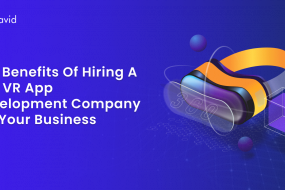
New technologies are allowing immersive digital worlds known as metaverses. Platforms like Decentraland are developing three-D social areas that may be explored via digital and augmented reality. However, constructing living digital environments of their scope demands giant technical foundations and a financial approach. This article goals to have a look at key fee factors in establishing a metaverse platform comparable to Decentraland. It will examine the expenditure required for middle device architecture, content advent, and ongoing operations. The purpose is presenting an obvious review of investment wishes at the same time as outlining sensible strategies to contain fees in the course of the development procedure. Ultimately a sustainable price range approach is critical to understanding online virtual frontier technologies.
What is Decentraland?
Decentraland is one of the famous virtual worlds inside the metaverse. It is an Ethereum-primarily based virtual fact platform that changed into developed with the aid of the Decentraland Foundation. In Decentraland, customers should buy land as non-fungible tokens (NFTs) that they can then expand and monetize via in-recreation activities and stories. Some key things to realize approximately Decentraland:
- Decentraland is completely decentralized, which means there may be no central entity that controls the platform. Instead, it’s miles owned and ruled through LAND token holders and MANA token citizens.
- The digital world is made up of 90,000 parcels of virtual land represented as NFTs at the Ethereum blockchain. Users can purchase this land (in the shape of LAND tokens) to build venues, video games, commerce, and other social reports.
- To get the right of entry to Decentraland, customers need the Decentraland app and a desktop VR headset. The platform is browser-primarily based so it can run on decrease-end systems.
- Like in actual lifestyles, popular places in Decentraland promote for top dollar. Land ownership is represented on the blockchain, giving proprietors verifiable evidence of possession.
- In Decentraland, the local MANA cryptocurrency is used to buy virtual gadgets, apps, and LAND tokens. Brands and creators use MANA to monetize their content material and activities.
Key Features and Functionalities of Decentraland
Decentraland is a digital realm where people can visit places, interact with others, and build experiences through emerging technologies. Certain things setting Decentraland apart involve:
- Ownership of Virtual Land – Users can obtain land parcels in Decentraland employing the platform’s cryptocurrency. This grants ownership over the digital property that can be expanded and monetized as chosen. Being able to purchase and sell digital land is a novel facet versus other virtual worlds.
- User-Generated Content – The virtual world consists entirely of material formed by users. Anybody can build districts, venues, activities, and other experiences on their land to share with others. A full editor is available to shape nearly anything imaginable. Other users can visit, interact, and give input on all of this user-generated content.
- Interoperable Assets – Items, clothing, and other collections can be built as non-fungible tokens (NFTs) that have esteem both within Decentraland as well as outside on other platforms and in reality. This allows creators to reach broader audiences and gifts ownership over digital items.
- Decentralized Governance – Important decisions regarding Decentraland’s future are put to a vote of LAND owners, providing a say in how the virtual world progresses. There is no centralized administration in control. This decentralized structure aims to keep the platform unbiased.
- Immersive 3D Environment – Through emerging technologies, Decentraland generates a fully 3D world that users can explore from different angles and perspectives. The virtual spaces feel realistic and allow interactive experiences.
Decentraland provides a novel approach involving decentralized ownership models, user freedom over virtual lands and items, and its immersive digital realm for connection and commerce.
Factors Impacting Development Costs
The following will examine key aspects driving expenditure for building a comprehensive virtual environment like Decentraland. Establishing such advanced digital worlds demands huge technical foundations and capital commitments. A variety of cost components must be addressed throughout the creation and long-term maintenance of the platform.
Technology Stack
The foundation of any metaverse platform is the underlying technology stack. More complex stacks involving virtual reality, augmented reality, blockchain, and distributed databases are deeper technology bets that require specialized skills and longer development times. Just the blockchain integration itself can substantially increase costs depending on the choice of platform – whether it’s Ethereum, Solana, or a custom chain. VR/AR brings additional costs for rendering advanced 3D graphics at scale.
Choosing proven open-source components over proprietary solutions provides more flexibility at lower cost but requires careful evaluation of long-term support and features. Custom-built elements also mean ongoing maintenance. The scale of the virtual environment like land area, user capacity, and asset complexity also drives technology decisions and accumulates costs. Larger scales demand more powerful servers, networking, hosting, and bandwidth.
Content Creation
High-fidelity 3D virtual content is essential for immersing users in the metaverse. However, developing a critical mass of quality assets to populate the virtual world does not come cheap. 3D modeling, texturing, rigging, animation, and other design skills command high billing rates. Outsourcing specialized 3D work like environment modeling or character creation to experienced freelancers and studios helps leverage existing talent but management overhead still applies.
Even small models or textures require many hours of design. On-boarding multiple artists also incurs recruitment costs. Assets need ongoing iteration and maintenance over the platform’s life. User-generated content through voxel-based editors or marketplaces helps supplement costs but moderation is still needed. Proper content pipelines and asset management systems are also investments. Licensing branded characters or art further layers on additional expenses.
Security and Compliance
Establishing robust security practices is crucial given the platform handles sensitive user data, authentication, digital assets, and payments. This requires specialized security architects, white-hat hackers, and ongoing security testing. Integrating secure features like biometrics, multi-factor authentication, encryption, anomaly detection, etc. into the foundational technology stack drives up initial costs. Continuously monitoring for vulnerabilities through manual and AI-based scans is an ongoing expense.
Complying with regulations also burdens expenses through legal consultations, audits, and certifications that need renewing periodically. Individually verifying user identity or implementing KYC checks increases customer acquisition costs. Handling compromises through incident response plans is another hidden security cost. Data centers, servers, and infrastructure essential for high availability must adhere to the latest compliance standards which also incur capital and operational overheads. With new threats and laws continuously emerging, security remains a long-tail expense.
Team and Talent
Building a cohesive multi-disciplinary team is critical but also a major cost factor. Hiring experienced full-time roles like lead engineers, 3D artists, designers, and product managers commands premium salaries in today’s competitive market – sometimes 2-5x more than regular web dev rates. Add backend teams, data scientists, and support functions to the tally. Selecting contractors over employees helps optimize costs initially but full-time hires are eventually needed for stability and complex work.
Sourcing rare skillsets like AR/VR developers burden recruitment expenses through specialized channels. Onboarding and training existing staff on metaverse technologies also cost time and money. If handled internally, losing critical employees impacts productivity and morale. Outsourcing non-core functions to specialist firms and leveraging global talent provides flexibility but managing vendors increases overhead. As the team scales, additional spending is needed on project management, collaboration tools, and infrastructure.
Legal and Licensing
Seeking expert legal counsel at every step of developing and operating a metaverse is crucial from an early stage to avoid pitfalls. Consulting attorneys well-versed in technology, data privacy, and international regulations is an ongoing expense. Addressing compliance requirements is more cost-effective proactively rather than reacting to rule changes.
Evaluating cross-border jurisdiction laws and their evolving virtual world interpretations is complex. Developing legally-vetted terms of use and policies protects all parties in the long run. Integrating third-party technology like game engines or SDKs requires carefully reviewing API & license terms which may include royalties or usage caps.
Even marketing partnerships have stipulations impacting budgets. Launching in new countries/regions demands localized legal customization and documentation. Handling user disputes around ownership or scam claims needs a dedicated process. Trademarking critical assets prevents ambiguities. Tax compliance for cross-border transactions also adds to the bills. Building relationships with a global network of specialized law firms ensures rapid response to surprise rulings.
Marketing and User Acquisition
Acquiring the initial user base is pivotal but intensely costly for unproven metaverse platforms. Performance-based campaigns across search, social media, gaming sites, VR platforms, and content sites help maximize ROI. However, finding the right media mix and refining targeting requires testing various creatives and advertisements until virality kickstarts.
Influencers and creator marketing takes marketing to audiences in niche communities authentically but tying them to tangible metrics is challenging. Organizing on-ground events and experiences also fosters real-world awareness which adds supplementary expenses. Retaining users post-registration with engaging onboarding, rewards, and exclusive access drives loyalty but demands extensive A/B testing.
Community management teams are needed for moderation and customer support across social channels which has increasing staffing costs. Measuring engagement metrics and iteratively optimizing the product based on feedback helps improve retention and lower acquisition costs in the long run. As user numbers tick upward, extensive server infrastructure is required to handle the pledged scalability.
Strategies to Manage Development Costs
Building out a complex virtual world comes with substantial costs that require careful planning. However, there are strategies to help manage expenses:
- Open-Source Infrastructure – Leverage existing free and open-source software, when possible, for networking, rendering engines, and more to avoid licensing fees.
- Outsource Non-Essentials – Focus internal teams on core competencies like world design. Hire freelancers or vendors globally for secondary tasks to reduce long-term headcount.
- Crowdfund Development – Conduct an initial coin offering (ICO) or series of crowdfunding campaigns to raise startup capital from backers before burning through private funds.
- Customer-Funded Features – Prioritize building out the most in-demand aspects voted on by your user community. New content and functionality can be delayed until incentivized through additional funding.
With smart strategic planning and the use of available cost-saving techniques, it’s possible to deliver an immersive metaverse experience while keeping development financially feasible.
Conclusion
Building complex virtual environments on the scale of Decentraland requires significant financial investments. However, with careful planning and a focus on sustainably, a metaverse platform can be developed responsibly. Leveraging existing open-source tools, outsourcing non-core functions, and empowering user innovations reduces costs. Conducting public funding rounds and utilizing cloud-based infrastructure optimizes budgets. Designing modular systems streamlines updates and scaling. Allowing in-world monetization through assets and commerce cultivates self-sufficient player economies. Ongoing optimization and strategic roadmap management ensure affordability over the long run. While developing virtual worlds involves intensive initial capital, leveraging these techniques can make metaverse creation financially feasible and help realize a new online frontier.











